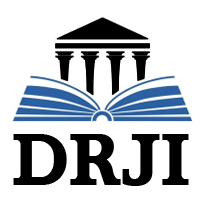Authors who publish in this journal agree to the following terms:
Acta Colombiana de Psicología complies with international intellectual property and copyright laws, and particularly with Article No. 58 of the Political Constitution of Colombia, Law No. 23 of 1982, and the Agreement No. 172 of September 30, 2010 (Universidad Católica de Colombia Intellectual Property Regulation).
Authors retain their copyright and grant to the Acta Colombiana de Psicología the right of first publication, with the work registered under Creative Commons attribution license, which allows third parties to use the published material, provided they credit the authorship of the work and the first publication in this Journal.
Abstract
This study aims to adapt, provide evidence of validity, analyze the invariance across gender, and estimate the reliability of the reduced version of the Sternberg's Triangular Love Scale (STLS-R). The sample size comprises 988 Peruvians (748 females and 240 males), who had been in a relationship for at least one month, and whose ages ranged from16 to 54 years old (M=21.29; SD=3.91). Before the statistical analysis, the semantic equivalence was tested through the translation-back translation method. The results indicate that the three-dimensional STLS-R model present satisfactory goodness-of-fit in the data (χ2 (87) = 177.14; χ2/df =2.04; CFI =.99; RMSEA=.03 [.02, .04]; SRMR = .03) which is invariant with respect to gender, and show acceptable reliability regarding intimacy (ω = .91), commitment (ω = .93) and passion (ω = .86). The overall results offer sufficient valid evidence and suggest that the scale can be used in further studies. However, its effectiveness should still be tested in different regions of Peru.
Keywords

References
Ahmetoglu, G., Swami, V., & Chamorro-Premuzic, T. (2009). The Relationship Between Dimensions of Love,
Personality, and Relationship Length. Archives of Sexual Behavior, 39(5), 1181-1190. https://doi.org/10.1007/
s10508-009-9515-5
Al-Krenawi, A., & Jackson, S. O. (2014). Arab American marriage: Culture, tradition, religion, and the social worker. Journal of Human Behavior in the Social Environment, 24(2), 115-137. https://doi.org/10.1080/10911359.2014.84
Andrade, A. L., Garcia, A., & Cassepp-Borges, V. (2013). Evidências de validade da escala triangular do amor de
Sternberg-reduzida (ETAS-R). Psico-USF, 18(3), 501-510. https://doi.org/10.1590/S1413-82712013000300016
Browne, M. W., & Cudeck, R. (1993). Alternative ways of assessing model fit. En K. A. Bollen & J. S. Long (Eds.),
Testing structural equation models (pp. 136-162). Sage. Byrne, B. M. (2008). Testing for multigroup equivalence
of a measuring instrument: A walk through the process. Psicothema, 20(4), 872-882. http://www.psicothema.com/ PDF/3569.pdf
Cassepp-Borges, V., & Martins, M. (2009). Versión Reducida de la Escala Triangular del Amor: Características del
Sentimiento en Brasil. Revista Interamericana de Psicología, 43(1), 30-38. https://www.redalyc.org/ pdf/284/28411918004.pdf
Cassepp-Borges, V., & Pasquali, L. (2012). Estudo nacional dos atributos psicométricos da Escala Triangular do Amor de Sternberg. Paidéia, 22(51), 21-31. https://doi.org/10.1590/S0103-863X2012000100004
Cassepp-Borges, V., & Pasquali, L. (2014). A redução de itens como uma alternativa para a Escala Triangular do Amor. Psicologia, 28(2), 11-20. http://www.scielo.mec.pt/scielo.php?script=sci_arttext&pid=S0874 20492014000200002
Cassepp-Borges, V., & Teodoro, M. L. (2007). Propriedades psicométricas da versão brasileira da Escala Triangular do Amor de Sternberg. Psicologia: Reflexão e Crítica, 20(3), 513-522. https://doi.org/10.1590/S0102-79722007000300020
Chen, F. F. (2007). Sensitivity of goodness of fit indexes to lack of measurement invariance. Structural Equation Modeling: A Multidisciplinary Journal, 14(3), 464-504. https://doi.org/10.1080/10705510701301834
Cheung, G. W., & Rensvold, R. B. (2002). Evaluating goodness-of-fit indexes for testing measurement invariance. Structural equation modeling, 9(2), 233-255. https://doi.org/10.1207/S15328007SEM0902_5
Collins, W. A., Welsh, D. P., & Furman, W. (2009). Adolescent romantic relationships. Annual Review of Psychology, 60, 631-652. https://doi.org/10.1146/annurev.psych.60.110707.163459
De Zubiría, M. (2002). ¿Qué es el amor? Fondo de Publicaciones Bernardo Herrera Merino.
Díaz-Loving, R., & Sánchez, A. (2002). Psicología del amor: una visión integral de la relación de pareja. Universidad Nacional Autónoma de México.
Diessner, R., Frost, N., & Smith, T. (2004). Describing the neoclassical psyche embedded In Sternberg's triangular
theory of love. Social Behavior and Personality: an international journal, 32(7), 683-690. https://doi.org/10.2224/
sbp.2004.32.7.683
Dimitrov, D. M. (2010). Testing for factorial invariance in the context of construct validation. Measurement and
Evaluation in Counseling and Development, 43(2), 121-149. https://doi.org/10.1177/0748175610373459
DiStefano, C., & Morgan, G. B. (2014). A comparison of diagonal weighted least squares robust estimation techniques for ordinal data. Structural Equation Modeling: A Multidisciplinary Journal, 21(3), 425-438. https://doi.org/10.1080/10705511.2014.915373
Evangelho, J. A. (2016). Análise fatorial exploratória e hierárquica da Escala Triangular do Amor. Avaliação
Psicológica, 15(1), 11-20. http://pepsic.bvsalud.org/scielo.php?script=sci_arttext&pid=S1677-04712016000100003
Frankl, V. (1997). Psicoanálisis y existencialismo. De la psicoterapia a la logoterapia. Fondo de Cultura Económica.
Freud, S. (1922). Certain neurotic mechanisms in jealousy, paranoia and homosexuality (Trad.: J. Riviere). En P. Reif (Ed.), Sexuality and the psychology of love (pp. 123-149).
Simon & Schuster Inc. Fromm, E. (2004). El arte de amar. Paidós.
Gao, G. (2001). Intimacy, passion, and commitment in Chinese and US American romantic relationships. International Journal of Intercultural Relations, 25(3), 329-342. https://doi.org/10.1016/S0147-1767(01)00007-4
Gouveia, V. V., Fonseca, P. D., Cavalcanti, J. P., Diniz, P. D., & Dória, L. C. (2009). Versão abreviada da Escala Triangular do Amor: Evidências de validade fatorial e consistência interna. Estudos de Psicologia, 14(1), 31-39. https://doi.org/10.1590/S1413-294X2009000100005
Graham, J. M. (2011). Measuring love in romantic relationships: A meta-analysis. Journal of Social and Personal Relationships, 28(6), 748-771. https://doi.org/10.1177/0265407510389126
Ha, T., Overbeek, G., de Greef, M., Scholte, R. H., & Engels, R.C. (2010). The importance of relationships with parents and best friends for adolescents’ romantic relationship quality: Differences between indigenous and ethnic Dutch adolescents. International Journal of Behavioral Development, 34(2), 121-127. https://doi.org/10.1177/0165025409360293
Hatfield, E., & Rapson, R. L. (1996). Stress and passionate love. En C. D. Spielberger & I. G. Sarason (Eds.), Stress and Emotion: Anxiety, Anger, and Curiosity (vol. 16, pp. 29-50). http://www.elainehatfield.com/ uploads/3/4/5/2/34523593/57._hatfield__rapson_1996.pdf
Hatfield, E., Bensman, L., & Rapson, R. L. (2012). A brief history of social scientists’ attempts to measure passionate love. Journal of Social and Personal Relationships, 29(2), 143-164. https://doi.org/10.1177/0265407511431055
Hatfield, E., Rapson, R. L., & Martel, L. (2007). Passionate love and sexual desire. En S. Kitayama & D. Cohen (Eds.),
Handbook of cultural psychology (pp. 760-779). Guilford Press.
Heinrich, D., Albrecht, C. M., & Bauer, H. H. (2012). Love actually? Measuring and exploring consumers’ brand love. Consumer-Brand Relationships, Theory and Practice. Routledge.
Hernández, J. A. (1999). Validação da Estructura da Escala Triangular do Amor: Análise fatorial confirmatória. Aletheia, 9, 15-25. https://psycnet.apa.org/record/2000-14120-002
Hirschfeld, G., & von Brachel, R. (2014). Multiple-Group confirmatory factor analysis in R-A tutorial in measurement invariance with continuous and ordinal indicators. Practical Assessment, Research & Evaluation, 19(7), 1-12. https://eric.ed.gov/?id=EJ1038101
Hu, L. T., & Bentler, P. M. (1999). Cutoff criteria for fit indexes in covariance structure analysis: Conventional criteria versus new alternatives. Structural equation modeling: a multidisciplinary journal, 6(1), 1-55. https://doi.
org/10.1080/10705519909540118
International Test Commission (2017). The ITC Guidelines for Translating and Adapting Tests (2. ª ed.). [www.InTestCom.org]Jöreskog, K. G. (2003). Factor Analysis by MINRES. To the Memory of Harry Harman and Henry Kaiser. http://www.ssicentral.com/lisrel/techdocs/minres.pdf
Kim, J., & Hatfield, E. (2004). Love types and subjective well-being. Social Behavior and Personality: An International Journal, 32, 173-182. https://doi.org/10.2224/sbp.2004.32.2.173
Le Breton, D. (1999). Cuerpo y comunicación. Las pasiones ordinarias. Antropología de las emociones. Nueva Visión. Lee, J. A. (1977). A typology of styles of loving. Personality and Social Psychology Bulletin, 3(2), 173-182. https://doi.org/10.1177/014616727700300204
Lemieux, R., & Hale, J. L. (2000). Intimacy, passion and commitment among married individuals: Further testing of the triangular theory of love. Psychological Reports, 87(3), 941-948. https://doi.org/10.2466/pr0.2000.87.3.941
Levin, J., & Kaplan, B. H. (2010). The Sorokin Multidimensional Inventory of Love Experience (SMILE): development, validation, and religious determinants. Review of Religious Research, 51(4), 380-401. https://doi.org/10.2307/20778530
Lievens, F., Anseel, F., Harris, M. M., & Eisenberg, J. (2007). Measurement invariance of the Pay Satisfaction
Questionnaire across three countries. Educational and Psychological Measurement, 67(6), 1042-1051. https://doi.
org/10.1177/0013164406299127
Lloret-Segura, S., Ferreres-Traver, A., Hernández-Baeza, A., & Tomás-Marco, I. (2014). El análisis factorial exploratorio de los ítems: una guía práctica, revisada y actualizada. Anales de Psicología, 30(3), 1151-1169. https://doi.org/10.6018/analesps.30.3.199361
Martinez, L., & Rodas, S. (2008). Relación entre estilos de amor y satisfacción sexual en hombres de 22 y 47 años.
Eureka, 8(2), 267-277. http://pepsic.bvsalud.org/scielo.php?script=sci_arttext&pid=S2220-90262011000200011
Maslow, A. H. (1991). Motivación y personalidad. Ediciones Díaz de Santos.
Mazadiego, T., & Norberto, J. (2011). El amor medido por la escala triangular de Sternberg. Psicolatina, 22, 1-10. http://psicolatina.org/22/seccion1/amor.pdf
McDonald, R. P. (1999). Test theory: A unified treatment. Erlbaum.
Millsap, R. E., & Kwok, O. (2004). Evaluating the impact of partial factorial invariance on selection in two populations. Psychological Methods, 9(1), 93-115. https://doi.org/10.1037/1082-989X.9.1.93
Mueller, R. O., & Hancock, G. R. (2008). Best practices in structural equation modeling. En J. W. Osborne (Ed.), Best practices in quantitative methods (pp. 488-508). Sage.
Neto, F., & da Conceição Pinto, M. (2015). Satisfaction with love life across the adult life span. Applied Research in
Quality of Life, 10(2), 289-304. https://doi.org/10.1007/s11482-014-9314-6
Ortega & Gasset, J. (1939/2005). Estudios sobre amor. Editorial Edaf.
Overbeek, G., Ha, T., Scholte, R., de Kemp, R., & Engels, R. C. (2007). Brief report: Intimacy, passion, and commitment in romantic relationships–Validation of a ‘triangular love scale’ for adolescents. Journal of adolescence, 30(3), 523-528. https://doi.org/10.1016/j.adolescence.2006.12.002
Pilishvili T. S., & Koyanongo E. (2016). The representation of love among Brazilians, Russians and Central Africans:
A comparative analysis. Psychology in Russia: State of the Art, 9(1), 84-97. http://psychologyinrussia.com/volumes/pdf/2016_1/psychology_2016_1_6.pdf
Precht, R. D. (2012). Amor: un sentimiento desordenado. Siruela.
R Development Core Team (2019). R: A language and environment for statistical computing. R Foundation for Statistical Computing [programa informático en línea]. https://cran.rproject.org/
Rodríguez, M. N., & Ruiz, M. A. (2008). Atenuación de la asimetría y de la curtosis de las puntuaciones observadas
mediante transformaciones de variables: Incidencia sobre la estructura factorial. Psicológica, 29(2), 205-27. http://www.redalyc.org/html/169/16929206/
Rosseel, Y., Oberski, D., Byrnes, J., Vanbrabant, L., Savalei, V., Merkle, E., … Chow, M. (2018). Package “lavaan”. https://pdfs.semanticscholar.org/e465/add515cdeeaa8de57bd1a9adc2569e44fa9a.pdf
Rubin, Z. (1970). Measurement of romantic love. Journal of Personality and Social Psychology, 16(2), 265-273. https://doi.org/10.1037/h0029841
Sakuray, P., & Akemi, C. (2014). Relaciones amorosas en descendientes japoneses. Ajayu Órgano de Difusión Científica del Departamento de Psicología UCBSP, 12(2), 207-226. http://www.scielo.org.bo/pdf/rap/v12n2/v12n2a3.pdf
Sanduvete-Chaves, S., Lozano-Lozano, J. A., Chacón-Moscoso, S., & Holgado-Tello, F. P. (2018). Development of a Work Climate Scale in Emergency Health Services. Frontiers in psychology, 9(10), 1-14. https://doi.org/10.3389/
fpsyg.2018.00010
Schmitt, N., & Kuljanin, G. (2008). Measurement invariance: Review of practice and implications. Human Resource Management Review, 18(4), 210-222. https://doi.org/10.1016/j.hrmr.2008.03.003
Scott, M. (1997). La nueva psicología del amor. Emecé Editores.
Seiffge-Krenke, I. (2003). Testing theories of romantic development from adolescence to young adulthood: Evidence of a developmental sequence. International Journal of Behavioral Development, 27(6), 519-531. https://doi.org/10.1080/01650250344000145
Singer, I. (2006). La naturaleza del amor (4. ª ed.). Siglo XXI.
Sternberg, R. J. (1986). A triangular theory of love. Psychological Review, 93(2), 119-135. https://doi.
org/10.1037/0033-295X.93.2.119 Sternberg, R. J. (1997). Construct validation of a triangular love scale. European Journal of Psychology, 27(3), 313-335. https://doi.org/10.1002/(SICI)1099-0992(199705)27:3<313::AID EJSP824>3.0.CO;2-4
Sternberg, R. J., & Barnes, M. L. (1988). The psychology of love. Yale University.
Sumter, S. R., Valkenburg, P. M., & Peter, J. (2013). Perceptions of love across the lifespan. Differences in passion, intimacy, and commitment. International Journal of Behavioral Development, 37(5), 417-427. https://doi.
org/10.1177/0165025413492486
Tabachnick, B. G., & Fidell, L. S. (2007). Using multivariate statistics. Allyn and Bacon.
Van de Schoot, R., Lugtig, P., & Hox, J. (2012). A checklist for testing measurement invariance. European Journal of
Developmental Psychology, 9(4), 486-492. https://doi.org/10.1080/17405629.2012.686740
Ventura-León, J. L., & Caycho-Rodríguez, T. (2016). Análisis exploratorio de la escala de amor de Sternberg en estudiantes universitarios peruanos. Acta de Investigación PsicológicaPsychological Research Records, 6(2), 2430-2439. https://doi.org/10.1016/j.aipprr.2016.06.006
Vera, G. (2017). Love in cross-cultural perspective: Mozambique-France comparison. Journal of Psychology in
Africa, 27(4), 334-337. https://doi.org/10.1080/14330237.2017.1347754
Wan Shahrazad, W. S., Hoesni, S. M., & Chong, S. T. (2012). Investigating the factor structure of the Love Attitude Scale (LAS) with Malaysian samples. Asian Social Science, 8(9), 66-73. https://doi.org/10.5539/ass.v8n9p66
Wheaton, B., Muthen, B., Alwin, D. F., & Summers, G. F. (1977). Assessing reliability and stability in panel models. Sociological methodology, 8, 84-136. https://doi.org/10.2307/270754
Yap, S. C., Donnellan, M. B., Schwartz, S. J., Kim, S. Y., Castillo, L. G., Zamboanga, B. L., … Vazsonyi, A. T.
(2014). Investigating the structure and measurement invariance of the Multigroup Ethnic Identity Measure in a multiethnic sample of college students. Journal of Counseling Psychology, 61(3), 437. https://doi.org/10.1037/
a0036253
Zinbarg, R. E., Revelle, W., Yovel, I., & Li, W. (2005). Cronbach’s α, Revelle’s β, and McDonald’s ω H: Their relations with each other and two alternative conceptualizations of reliability. Psychometrika, 70(1), 123-133. https://
doi.org/10.1007/s11336-003-0974-7


































